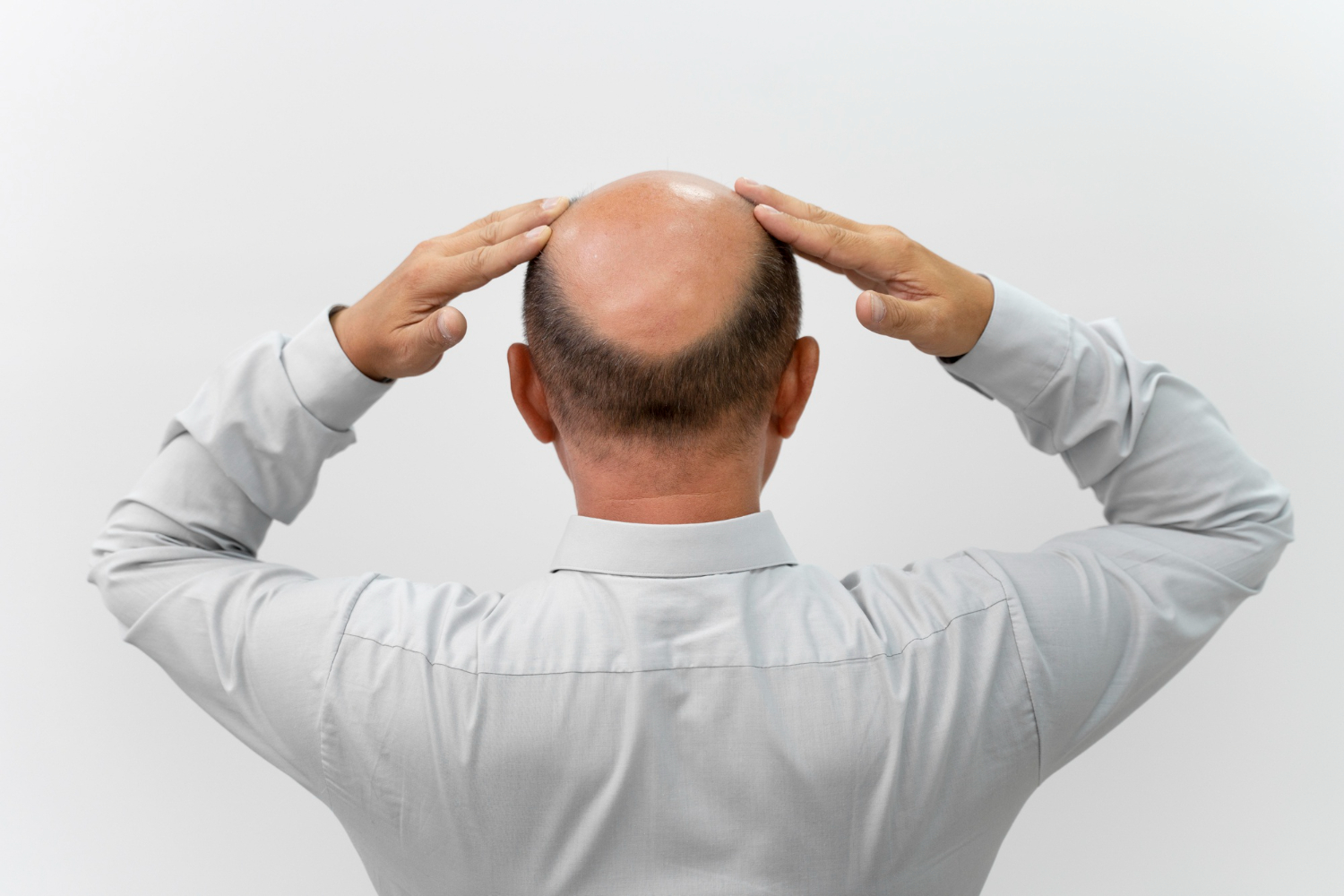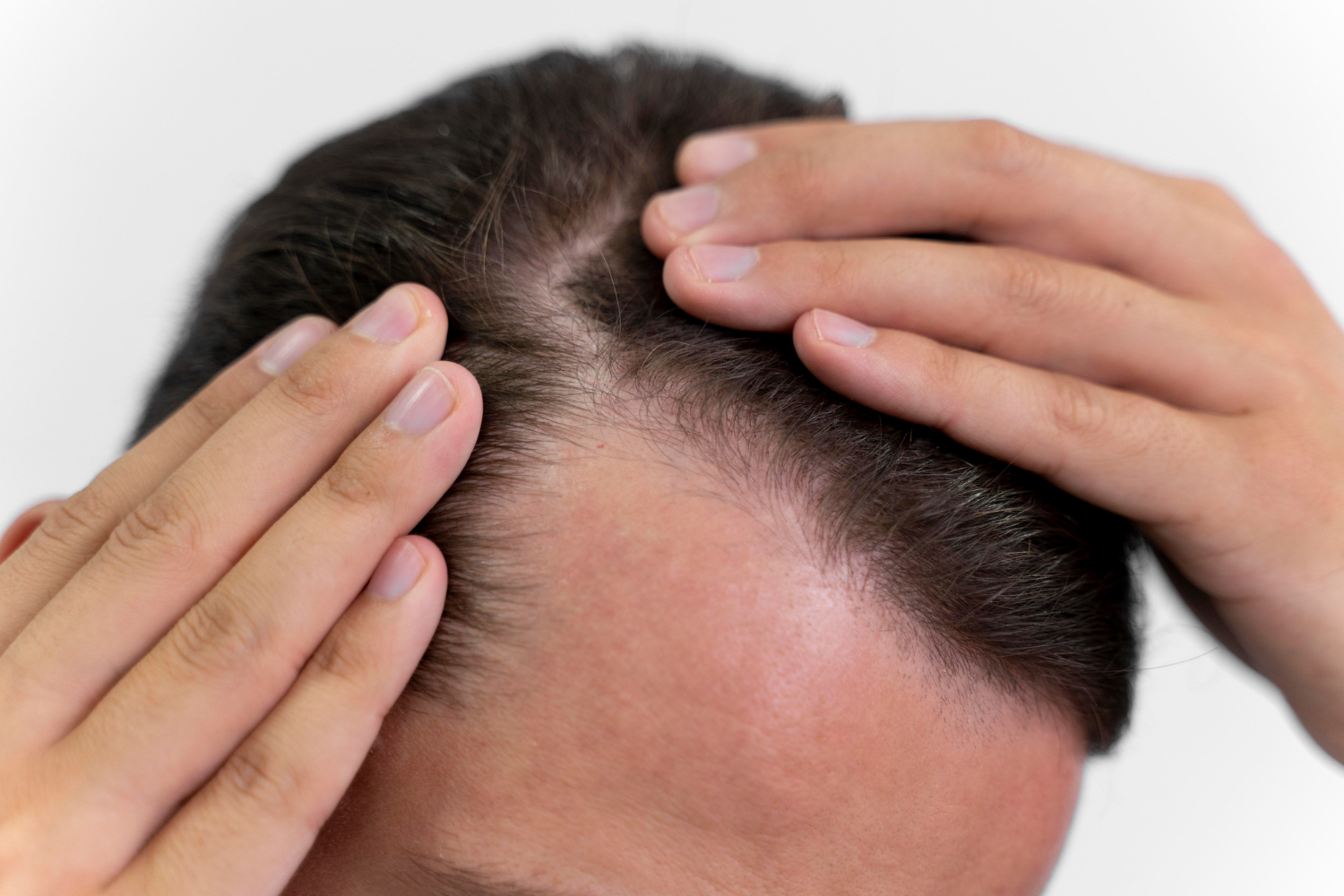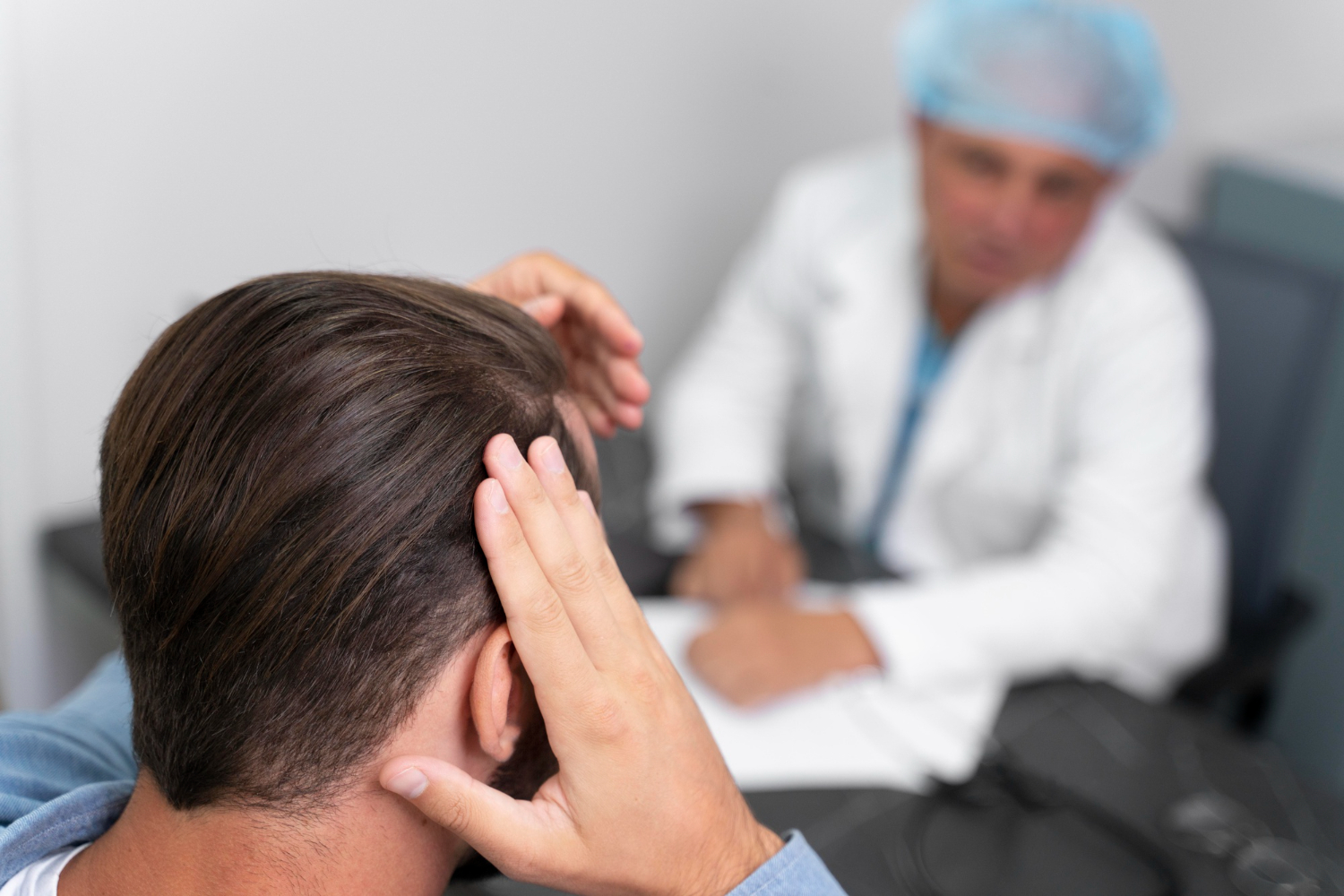
Hair is often seen as a symbol of vitality and attractiveness, especially for men. However, male hair loss is a common concern that can affect self-esteem and confidence. The good news is that understanding male pattern hair loss and its treatment options can help men regain their sense of self-assuredness and even restore a full head of hair. In this blog, our experts will explain what is male hair loss, its causes, types, and effective treatments for men.
What is Male Hair Loss?
Male hair loss, also known as male pattern baldness, is a common condition characterised by the gradual thinning of hair or the development of bald spots. It typically follows a distinct pattern, often beginning with a receding hairline or thinning at the crown of the head. This process occurs due to a combination of genetic, hormonal, and environmental factors.
Understanding the Main Causes of Male Hair Loss

Identifying the causes of hair loss is the first step towards figuring out the right treatments to address the problem.
-
Genetics
Family history plays a significant role in male pattern baldness. If your relatives have experienced hair loss, you may be more predisposed to it. This condition is passed down through family genes, and the inheritance pattern can come from both your maternal and paternal sides.
-
Hormones
Hormonal imbalances, particularly an increased sensitivity to dihydrotestosterone (DHT), play a crucial role in male pattern baldness. DHT is a derivative of the male sex hormone testosterone and can lead to the shrinkage of hair follicles.
Over time, this can result in finer, shorter, and less pigmented hair, ultimately leading to hair loss. Not all individuals are equally sensitive to DHT, which explains why some men experience hair loss while others do not.
-
Age
Male hair loss often becomes more prominent as men age. It is considered a natural part of the ageing process and is known as age-related or senescent alopecia. Hair loss typically begins in the late 20s or early 30s and progresses over time. The rate and extent of hair loss can vary from person to person.
-
Stress
While stress itself may not directly cause male pattern baldness, it can exacerbate hair loss in individuals who are already genetically predisposed to it. Stress can lead to a condition called telogen effluvium, where a significant number of hair follicles enter the resting phase simultaneously, causing hair to fall out more quickly than usual.
Stress management techniques and reducing emotional and physical stressors can be crucial for those looking to prevent or mitigate hair loss.
-
Nutrition
A balanced diet with essential nutrients is essential for maintaining healthy hair. Nutrient deficiencies, such as iron, zinc, biotin, and vitamins, can weaken the hair and contribute to hair loss. Proper nutrition helps support the growth and strength of hair, making it important to maintain a diet rich in the necessary vitamins and minerals.
-
Medical Conditions
Hair loss can also be caused by medical conditions, such as alopecia areata, an autoimmune disorder where the immune system attacks hair follicles, leading to hair loss in patches.
In such cases, it is essential to seek medical attention to address the underlying health issue and explore different hair loss treatments for men. Other medical conditions, like thyroid disorders or certain medications, can also contribute to hair loss.
4 Types of Male Hair Loss
Male hair loss comes in several forms, with the most common being. Here are a few types of male hair loss you should be aware of.
1. Androgenetic Alopecia
Androgenetic Alopecia is the classic male pattern baldness and is genetically determined. It often follows a distinct pattern of hair loss.
2. Alopecia Areata
Alopecia Areata is an autoimmune condition characterized by sudden hair loss in small, round patches.
3. Telogen Effluvium
Triggered by stress, illness, or medication, this condition results in sudden and diffuse hair thinning.
4. Traction Alopecia
This is caused by excessive tension on hair follicles due to hairstyles like tight braids or cornrows.
For more information on different types of hair loss, read our blog.
Doctor-Recommended Hair Loss Treatments for Men

While there is no defined hair loss cure for men, there are a few methods that help manage the condition. It’s essential to consult with a healthcare professional to determine the best hair loss treatments for men.
1. Medications
Prescription medications are available to help slow down or even reverse hair loss. These medications work by targeting the underlying causes of hair loss, such as hormonal imbalances, and can be effective in promoting hair regrowth and reducing further hair thinning. Your healthcare provider can recommend and prescribe the most suitable medication based on your specific condition.
2. Hair Transplant Surgery
Hair transplantation is a surgical procedure in which hair follicles are taken from areas with healthy hair growth (usually the back or sides of the head) and transplanted to areas with thinning or no hair (the recipient area). This provides a more permanent solution to hair loss, as the transplanted hair continues to grow naturally.
3. QR678®
QR678® hair treatment is a non-surgical method designed to facilitate hair regrowth and mitigate the effects of hair loss. QR678® include a growth factor formula administered via mesotherapy, precisely targeting the scalp. This formulation exerts a stimulating influence on dormant hair follicles, coaxing them into the anagen growth phase with remarkable efficacy. The name “QR678®” signifies its quick and effective response to a problem that previously had no solution. With the impressive results it delivers, QR678® ensures that hair loss is no longer a concern for you!
View this post on Instagram
4. GFC Treatment
GFC hair treatment, is a safe method that harnesses growth factors produced from your own blood along with added growth factors to deliver optimal outcomes in addressing hair loss. In the process of GFC hair loss therapy, these growth factors are carefully introduced into the scalp using superficial injections directly at the hair follicles’ base. This GFC procedure not only diminishes hair loss but also stimulates hair growth, enhances hair follicle thickness, and augments the overall number of hairs.
Takeaway
Male hair loss is a common condition with multiple underlying causes. Understanding the types and causes of hair loss is crucial in seeking effective hair loss treatments for men. While there may not be a universal “cure” to male baldness, various treatments can help prevent further hair loss and promote regrowth.
FAQs around Male Hair Loss
1. How much hair loss is normal for men?
It’s normal for men to lose 50-100 hairs per day. Excessive hair loss or visible thinning should be a cause for concern.
2. How to prevent or reverse male pattern hair loss?
Preventing or reversing male pattern hair loss can involve medications, hair transplants, or lifestyle changes. Consider hair spa treatments to promote hair health.
3. Can puberty cause male hair loss?
Puberty can lead to hormonal changes that may trigger hair loss, but it’s often temporary. If hair loss persists, consult a dermatologist.